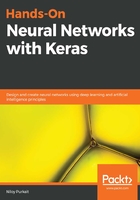
The mysteries of neural encoding
In reality, many neuroscientists argue that this idea of a unified representative neuron, such as our cat expert neuron, doesn't really exist in our brain. They note how such a mechanism will require our brain to have thousands of neurons dedicated only to specific faces we have known, such as our grandmother, the baker around the corner, or Donald Trump. Instead, they postulate a more distributed representation architecture. This distributed theory states that a specific stimulus, such as the picture of a cat, is represented by (and will trigger) a unique pattern of firing neurons, widely distributed in the brain. In other words, a cat will be represented by perhaps (a wild guess) 100 different neurons, each dedicated to identifying specific cat-like features from the image (such as its ears, tail, eyes, and general body shape). The intuition here is that some of these cat neurons may be recombined with other neurons to represent other images that have elements of cat within. The picture of a jaguar, or the cartoon cat Garfield, for example, could be reconstructed using a subset of the very same cat neurons, in conjunction with some other neurons that have learned attributes that are more specific to the size of jaguars, or Garfield's famous orange and black stripes, perhaps.